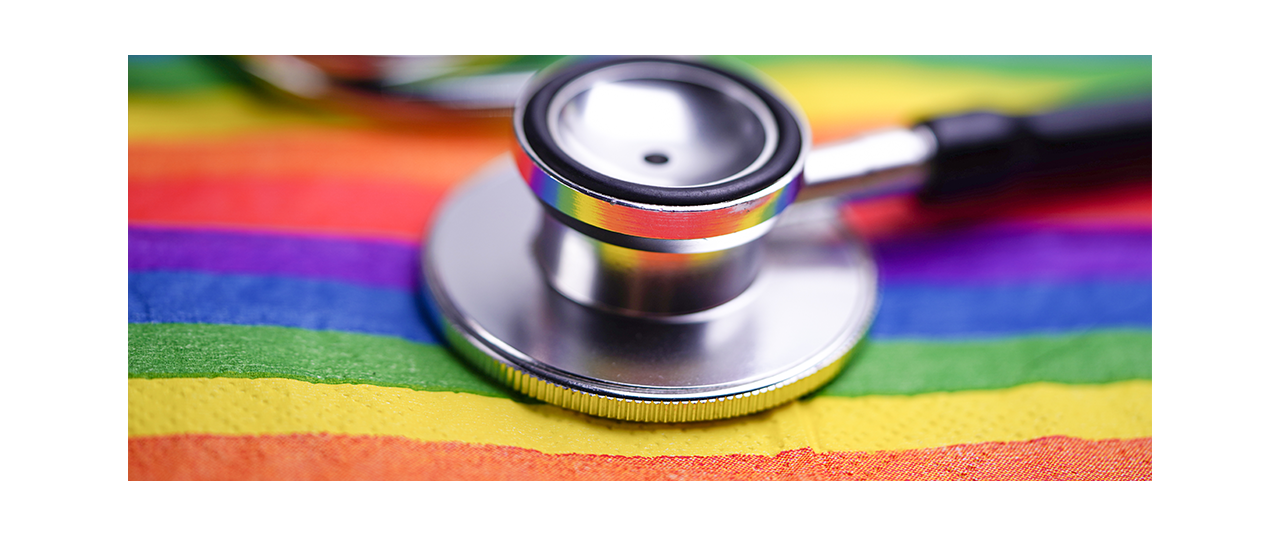
As we enter Pride Month, and as we move forward with vaccinations to protect our communities through the continuing COVID-19 pandemic, there are more opportunities to celebrate in-person. Many people associated Pride Month for the lesbian, gay, bisexual, transgender, queer, questioning and inclusive community with parades and rainbows. I love a good parade and have had the opportunity to watch and even walk in a few. While I love the costumes and celebration, those parades mean more to me because they represent a community that has been and continues to be overlooked, ignored and hidden, if not outright attacked.
There are still countries and laws that make me and other members of the LGBTQ+ community worry about our safety or lives. In our own great nation, there is still violence against the LGBTQ+ community—I myself have been attacked. I worry particularly for the children who experience bullying or harassment. Over the past year, 42% of LGBTQ+ youth seriously considered suicide. Among transgender adolescents, suicide attempts may be as high as 35%. One study from the National Center for Transgender Equality found 40% of transgender individuals reported attempting to commit suicide at least once, most before the age of 25. Shocking as these numbers are, they make a little more sense when I attend those parades and festivals and see protestors with signs and bullhorns spewing the vilest hate I have seen aimed at the LGBTQ+ community—it can be challenging to live authentically when you’re met with so much cruelty and vitriol.
So why do I love the parades in the face of all this? At those parades, I don’t just see protestors, I see the amazing diversity of the LGBTQ+ community, including people of all ages, backgrounds and even political affiliations. I see suburban families who normally never come into the cities except for this moment to experience full acceptance. I see allies joining in who care about and support the LGBTQ+ community publicly and in their lives. And I’m excited to sometimes see representatives from other hospitals and health systems participating to demonstrate that their organizations provide inclusive care for and support their employees in the LGBTQ+ community. I continue to walk in and watch the parades not only for these people, but also for those who are not able to attend the parades and wish they could. As a healthcare executive, I also participate to ensure that our LGBTQ+ veterans know that our health system is a place where they can receive appropriate and supportive care, as every veteran and truly every human deserves. That said, the parades last just a few hours. What are we doing the rest of the year and why, as healthcare executives and leaders, should we be doing more?
At least 20% of LGBTQ+ individuals report experiencing employment discrimination; LGBTQ+ people of color reported facing employment discrimination at twice that rate. Even before I became the leader of a healthcare system, I had the opportunity to educate, advocate and represent to create the most inclusive environment possible. I’ve had colleagues share their authentic selves with me when they did not feel they could do so with others. I’m fortunate that I chose a career with the U.S. Department of Veterans Affairs, where leadership has explicitly supported LGBTQ+ employees with strong stances against discrimination and where we continue to focus on health equity for all veterans.
I’m also fortunate to be able to collaborate with other healthcare leaders to strengthen inclusion efforts for our veteran patients. All three of the Alabama VA health systems (Birmingham, Central Alabama and Tuscaloosa) achieved Leader status on the 2020 Healthcare Equality Index. That didn’t happen just because of a parade. Our individual efforts include creating "Pride in All Who Served" groups that help our LGBTQ+ veterans with the health issues in their lives, empowering our LGBTQ+ veteran care coordinators, holding educational programming for our employees to help them understand how society and standards are changing so that they are inclusive in their interactions, and the commitment of leadership to make change. We also are working together on collaboratives to support one another and share best practices.
I’ve heard people ask why we are doing all this for only a few people. But the truth is, while there are still many hidden members of the LGBTQ+ community, an estimated 4.5% of the U.S. population openly identifies as LGBTQ+. With bans and “Don’t Ask, Don’t Tell” and similar concerns, many members of the U.S. military and other veterans were or are also long hidden; an estimated 6.1% of service members identified as LGBTQ+. Suicide prevention is our top priority at VA because one life lost is too many. The suicide rate for veterans is estimated to be 1.5 times the rate for civilian adults. If you are or know anyone at risk for suicide, whether a veteran or not, please contact the National Suicide Prevention Lifeline at 1-800-273-8255.
The other reason why we, as healthcare executives, should all be involved is because creating an inclusive healthcare environment doesn’t just take care of our LGBTQ+ patient population, it takes care of all of us. We all have many facets to our lives and, as Thomas Jefferson and many others have stated in their own way, the measure of society is how it treats its most vulnerable members. As healthcare leaders, we are responsible for all of our patients, especially our most vulnerable.
Amir Farooqi, FACHE, is Director/CEO, Central Alabama Veterans Health Care System, Montgomery and Tuskegee, Ala.
